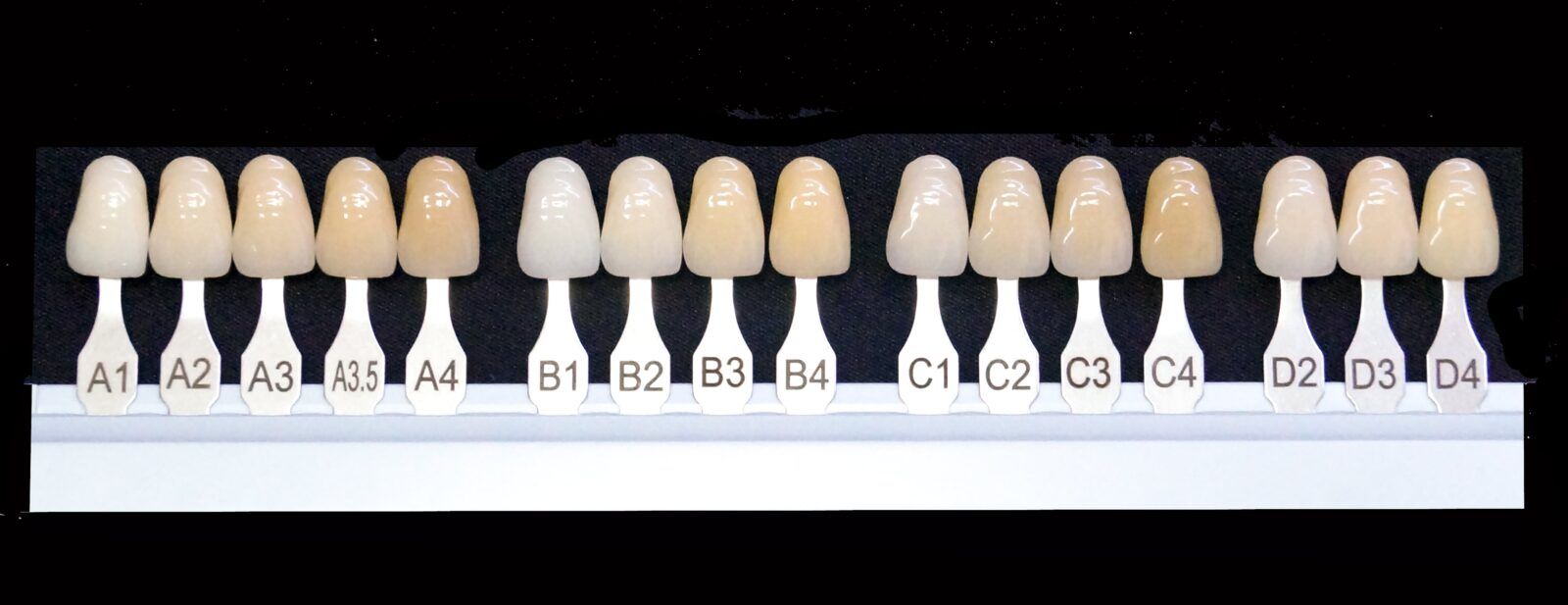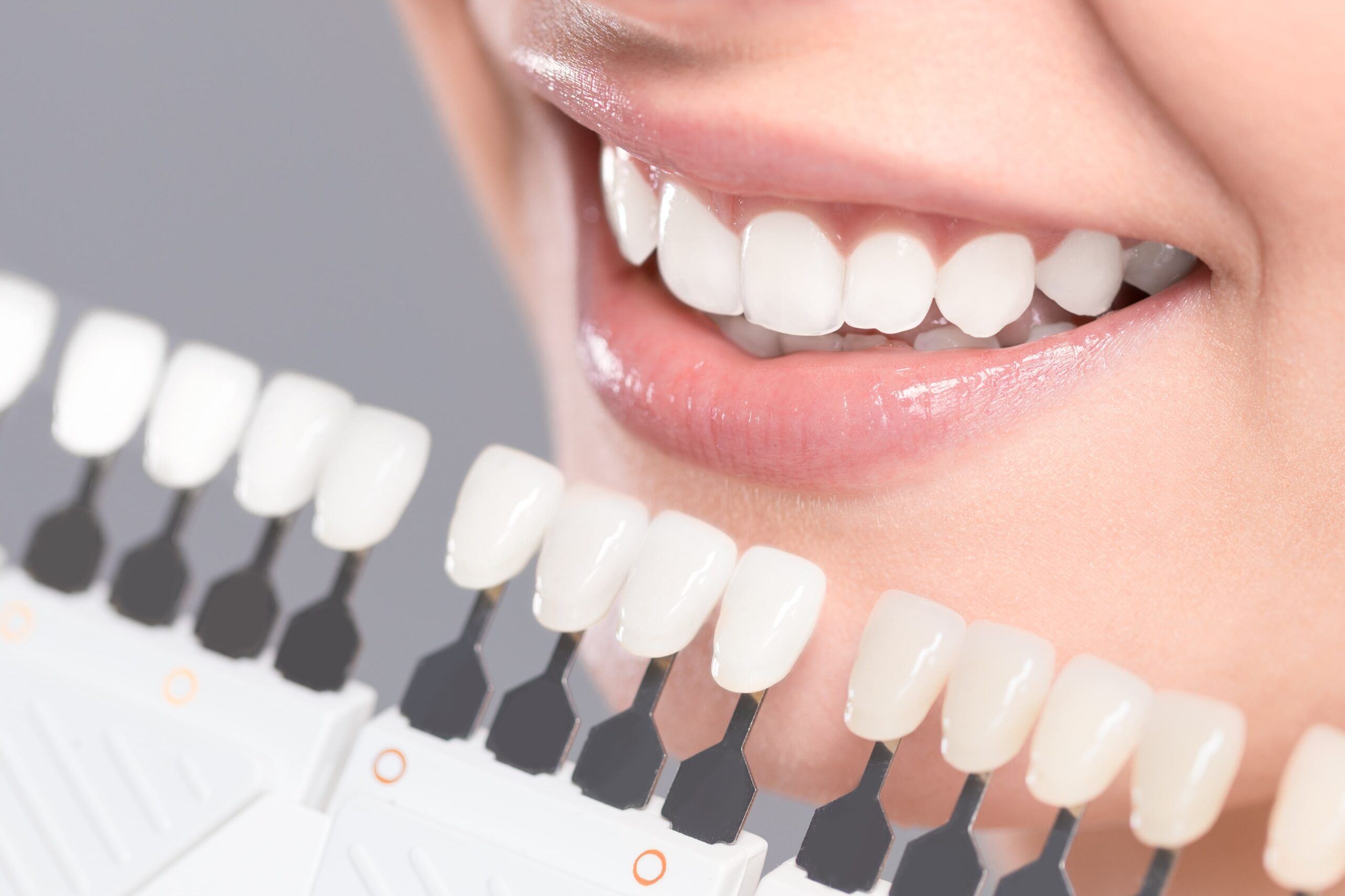When it comes to dental aesthetics, one of the most overlooked yet crucial aspects is choosing the right shade for your teeth. Whether you’re getting veneers, crowns, or teeth whitening, selecting the perfect shade can make all the difference in achieving a natural and radiant smile. In this guide, we’ll delve into the art and science of picking the ideal tooth color.
Understanding the Basics of Your Natural Tooth Color
Before diving into the selection process, it’s essential to understand the basics of tooth color. Teeth are not purely white; they have varying shades and undertones. These can be broadly categorized into four primary shades:

- A (Reddish Brown)
- B (Reddish Yellow)
- C (Grey)
- D (Reddish Grey)
Each category has multiple shades, allowing for a nuanced selection that matches your natural tooth color. In addition to your natural tooth color, several factors can influence the natural color of your teeth:
- Genetics: Just as you inherit traits like hair and eye color, your tooth shade can also be a family trait.
- Diet: Consuming beverages like coffee, tea, and red wine can stain teeth over time.
- Age: As we age, the enamel on our teeth wears down, revealing the yellower dentin beneath.
- Medications: Some medications can cause tooth discoloration as a side effect.
Why Consider Your Natural Tooth Color
Considering your natural tooth color when deciding on cosmetic dental treatments is crucial for several reasons:
Achieving a Natural Look:
The primary goal of cosmetic dental treatments is to enhance the aesthetics of your smile. If the color of the restoration (e.g., veneers, crowns, or fillings) doesn’t match your natural tooth color, it can stand out and look artificial. A harmonious color match ensures that the treatment blends seamlessly with your existing teeth.
Consistency Across the Smile:
If only a few teeth are being treated, a mismatch in color can lead to an inconsistent appearance across your smile. This inconsistency can draw attention to the treated teeth, making them more noticeable than the untreated ones.
Maintaining Facial Harmony:
Teeth play a significant role in facial aesthetics. The color of the teeth can influence how other facial features are perceived, especially the skin tone and lip color. Choosing a shade that complements your overall facial features ensures a balanced and harmonious look.
Future Treatments:
If you decide to undergo further dental treatments in the future, having restorations that match your natural tooth color can make it easier to achieve consistent results across different procedures.
Psychological Impact:
A smile that looks natural and harmonious can have a positive psychological impact. It can boost self-esteem, improve social interactions, and contribute to a more positive self-image.
How to Pick Your Tooth Color
Picking the right tooth color, especially for cosmetic dental procedures, is essential for achieving a natural and harmonious smile. Here are some tips to help you make the best choice:
Consult with Your Dentist:
Your dentist has the expertise and experience to guide you in selecting a shade that complements your overall appearance. They can provide insights based on your oral health and the specific treatment you’re considering.
Use a Dental Shade Guide:

Dentists often use shade guides that offer a range of tooth colors. By comparing these shades to your natural teeth, you can get a better idea of which color matches best.
Consider Natural Light:
Always evaluate tooth color under natural light, as artificial lighting can distort the true shade. If possible, check the shade outside or near a window during daylight. In many cases, your dentist’s office will have an area where you can use natural light to decide on the best shade for your smile.
Factor in Your Skin Tone:
Your skin tone and undertones can influence how your teeth appear. Some shades might look more natural and flattering against certain skin tones. Pay attention to which shades make your face appear more flattering and which shades do not.
Think About Age:
As we age, our teeth naturally become more yellow or discolored. While you might be tempted to go for a bright white shade, a slightly softer white or a shade with subtle yellow undertones might look more natural, especially for older individuals.
Avoid Extreme Whites:
Ultra-bright whites can often look unnatural and can draw attention in a way that might not be flattering. Instead, aim for a shade that brightens your smile while still looking natural. As mentioned above, factors like skin tone and age can affect which color looks best for you.
Temporary Trials:
If available, consider trying temporary veneers or bonding in your chosen shade. This “test drive” allows you to see how the color looks in various lighting conditions and how you feel about it before committing to a permanent solution.
Consider the Color of Adjacent Teeth:
If you’re getting a restoration for a single tooth or a few teeth, ensure the chosen color matches or complements the color of the adjacent natural teeth.
Maintenance and Future Staining:
Some dental materials can resist stains better than natural teeth. Discuss with your dentist how your chosen shade might change over time, especially if you consume stain-causing foods and beverages.
Seek Feedback:
Sometimes, getting a second opinion from a trusted friend or family member can help. They can provide an outsider’s perspective on what looks most natural and appealing.
Trust Your Instincts:
While it’s essential to gather information and seek advice, trust your gut feeling. If a particular shade feels right and boosts your confidence, it’s likely a good choice for you.
Remember, the goal is to achieve a smile that you’re proud of and that looks as natural as possible. Taking the time to pick the right tooth color can make a significant difference in the final outcome of your cosmetic dental treatment.
In Conclusion
Choosing the right tooth shade is a blend of art and science. It’s about understanding the basics, considering various factors, and working closely with your dentist. With the right shade, you can achieve a smile that’s not just beautiful but also looks natural and authentic. Remember, the goal isn’t just to have whiter teeth, but to have a smile that complements and enhances your overall appearance.




